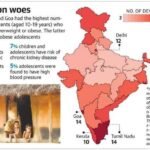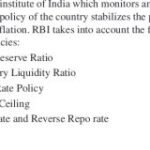Government initiative of converting Used Cooking Oil to Biodiesel

To mark the 150th birth anniversary of Mahatma Gandhi on 2nd October as Rashtriya Swachhta Diwas, Secretary, Petroleum and Natural Gas flagged off the publicity vans in Delhi, to generate awareness among the people about the OMCs’ initiative of converting Used Cooking Oil to Biodiesel. Wide publicity is being given to the RUCO (Repurpose Used Cooking Oil) initiative by the Oil Marketing Companies (OMCs) to make India “Swachh” by conversion of used cooking oil, which otherwise would be disposed off in drains, cause spillages/ environmental damage and pose health hazard.
The consumption of Used Cooking Oil (UCO) poses adverse health effects. During frying, several properties of cooking oil are altered and Total Polar Compounds (TPC) are formed on repeated frying. The toxicity of these compounds is associated with several diseases such as hypertension, atherosclerosis, Alzheimer’s disease, liver diseases. Therefore, it is essential to monitor the quality of vegetable oils during frying. Also disposal of UCO in drains causes ecological damage and is an environment concern.
In order to safeguard consumer health, Food Safety and Standards Authority of India (FSSAI) has fixed a limit for Total Polar Compounds at 25 percent beyond which the vegetable oil shall not be used for cooking. Repurpose Used Cooking Oil (RUCO), launched by FSSAI, provides an ecosystem that will enable the collection and conversion of UCO to biodiesel.
LEARNING WITH TIMES
During frying, fats (oils) undergo chemical reactions that cause an increase in deterioration. The result is the formation of components that have a different polarity than the original components of the fat. Collectively these are called total polar material (TPM), and the mass concentration of TPMs is used to measure the quality of frying oil.
Fresh cooking oils are naturally non-polar and almost pure triglyceride, meaning their compounds are symmetrically shaped and not “broken-down.” During the frying process, air, moisture and heat are introduced to the oil. This process begins to break down oil and produce non-triglyceride byproducts that include free fatty acids, alcohols, cyclic compounds and polymers.Total Polar Materials, or TPM, are the standard adopted in Europe and elsewhere around the world as a regulatory index for determining frying oil quality and safety in restaurant frying oils. The simplest definition for total polar materials is all non-triglyceride materials soluble in, emulsified in, or suspended in oil.
Fresh oil typically contains two to four percent polar compounds, but may contain less. As oil is used, it breaks down, and the polar content of that oil increases. The rate of degradation depends upon the food being fried (coated products will damage oil more than French fries, for example). The temperatures at which foods are fried, the cleanliness of a fryer, and additional factors will also contribute.
Whether two substances mix or not is often determined by how polar or non-polar the two respective substances are. Polar substances have, due to the shape and nature of the molecules they are made of, regions with varying electric charge. Polar molecules have ends that are either positively or negatively charged. Non-polar substannces have uniform, neutral electric charge in all parts of the molecule. Non-polar molecules do not have positive or negative regions.






0 Comments